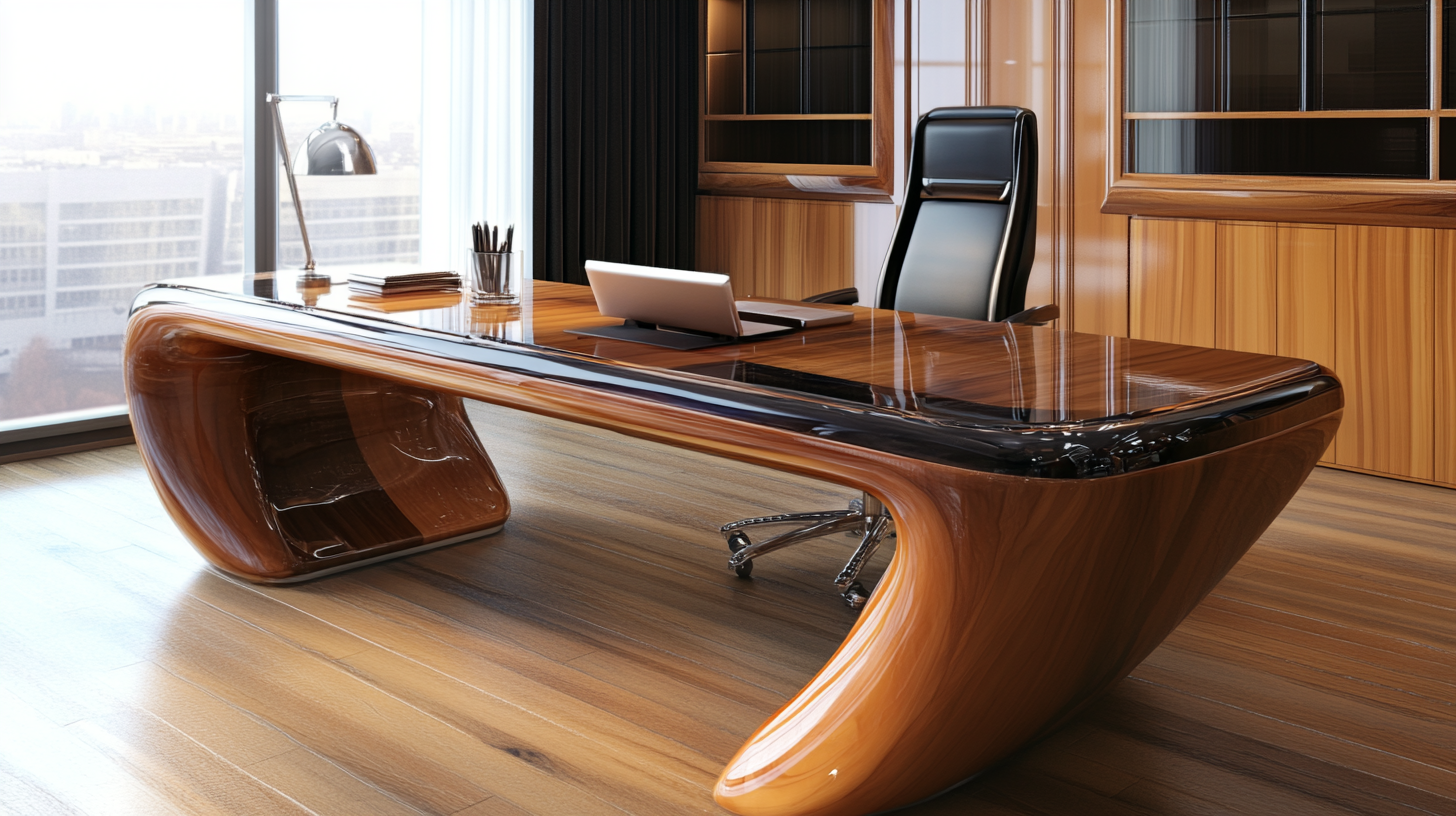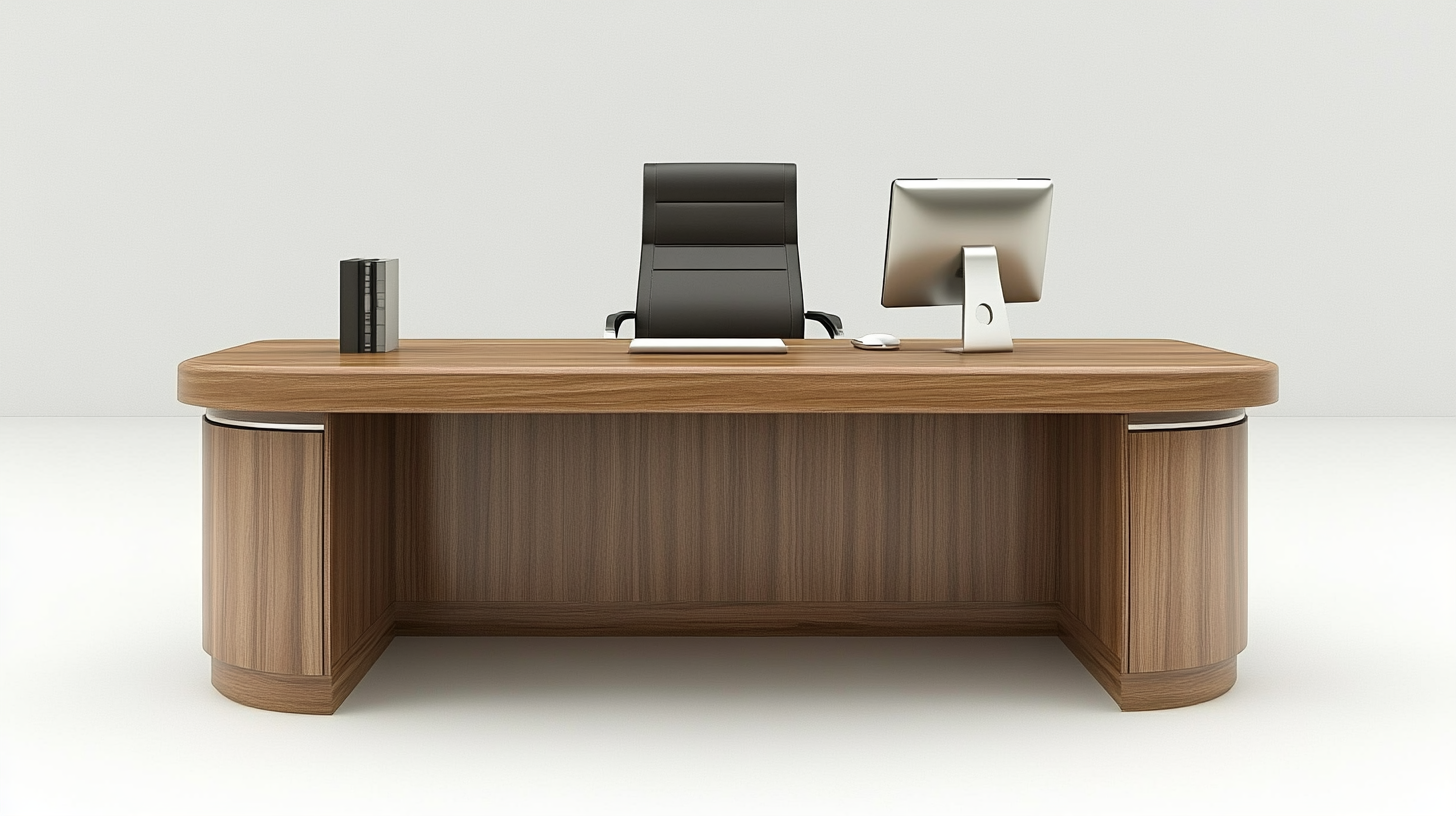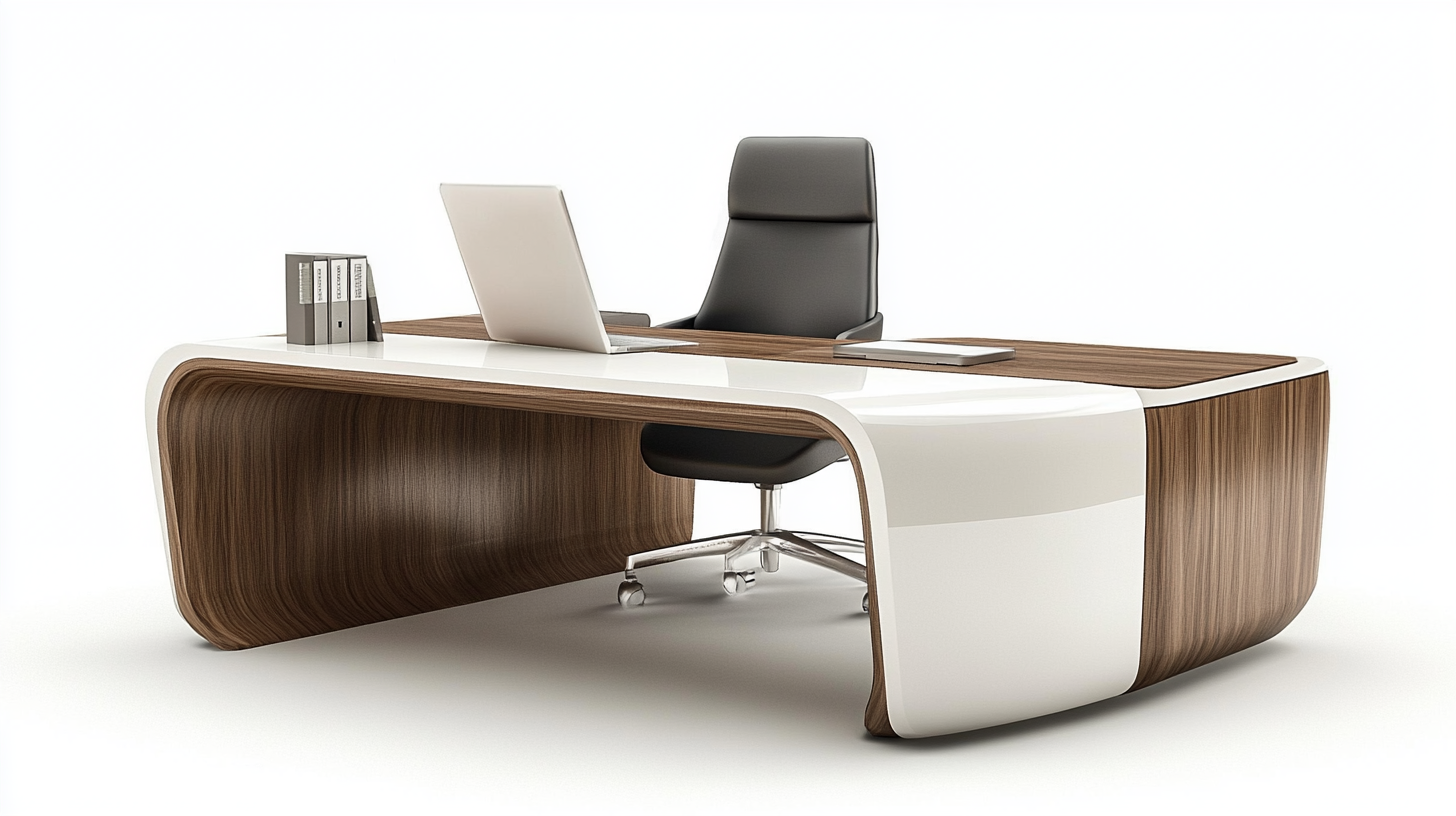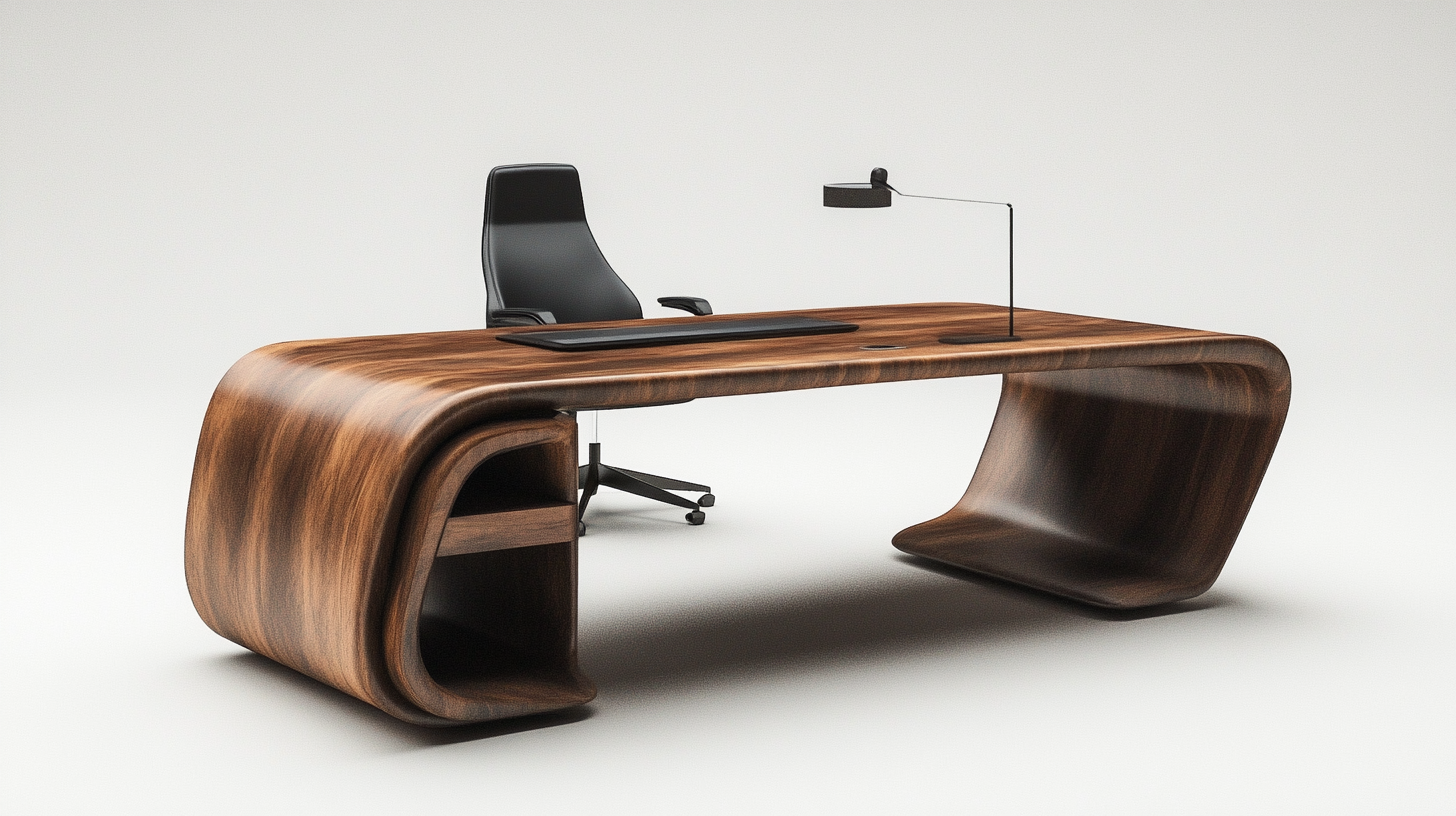Choosing the right materials for office furniture is crucial for creating a functional and aesthetically pleasing workspace. With the increasing importance of employee comfort and productivity, the selection of quality office furniture materials has never been more vital. From sleek and modern designs to traditional craftsmanship, the materials used not only affect the durability and maintenance of furniture but also influence the overall ambiance of the office environment.
In this blog, we will explore the best materials for office furniture that can enhance both comfort and style. We will delve into the pros and cons of different materials such as wood, metal, plastic, and upholstery, examining how each choice can impact the ergonomics and visual appeal of your workspace. Whether you are furnishing a home office or a corporate setting, understanding the best materials will empower you to make informed decisions that cater to your needs and elevate your office furniture to new heights.

When evaluating the durability of popular office furniture materials, three key contenders are wood, metal, and plastic, each offering distinct benefits and challenges. The global furniture market is projected to grow significantly, with a valuation expected to reach USD 878.14 billion by 2032, indicating a rising demand for reliable and functional office furnishings. According to industry trends, wood remains a popular choice for its aesthetic appeal and durability, particularly in environments that aim to create a warm and inviting atmosphere. This preference is supported by studies showcasing how wooden furniture can enhance the aesthetic evaluation of office spaces, which is critical for employee satisfaction and productivity. On the other hand, metal and plastic materials provide unique advantages in terms of longevity and maintenance. The modular furniture market, for instance, is anticipated to witness a CAGR of 4.7%, largely driven by an increasing preference for lightweight, durable options that can adapt to various office layouts. Metal furniture typically offers superior strength and stability, making it ideal for high-traffic areas. Conversely, while plastic furniture might be perceived as less durable, advancements in material technology have led to the development of high-performance plastics that can withstand considerable wear and tear, providing cost-effective solutions for businesses. As companies increasingly focus on sustainable practices, the choice of materials is also influenced by environmental considerations. Reports have indicated that replacing plastics with alternative materials may lead to higher greenhouse gas emissions in many cases. This emphasizes the importance of making informed decisions regarding material selection, balancing durability, cost, and environmental impact in the quest for the best office furniture solutions.

Sustainability in office furniture design has gained tremendous momentum in recent years, largely influenced by a growing awareness of environmental issues and a shift towards eco-friendly materials. According to a report from the Global Sustainability Institute, 79% of consumers are more likely to purchase products made from sustainable materials, indicating a significant market demand for greener options in office furniture. This shift is not only beneficial for the environment but is also driving innovations in material sourcing and production practices.
Eco-friendly materials such as bamboo, reclaimed wood, and recycled metals are now at the forefront of office furniture manufacturing. Bamboo, for instance, is a rapidly renewable resource that grows exceptionally fast and replenishes itself without the need for fertilizers or pesticides. The Forest Stewardship Council (FSC) also provides certifications for sustainably sourced wood, assuring consumers that their furniture purchases support responsible forestry management. In fact, the use of certified wood products in office spaces has increased by over 35% in the last few years, reflecting businesses' commitment to sustainability.
Moreover, certifications such as Greenguard and LEED (Leadership in Energy and Environmental Design) are becoming essential for office spaces aiming to reduce their carbon footprints. Greenguard-certified furniture is designed to minimize chemical exposure within indoor environments, providing healthier workplaces. A report by the U.S. Green Building Council indicates that LEED-certified buildings, which often include sustainable furniture, can lead to energy savings of 24% compared to standard buildings. This not only enhances employee well-being but can significantly reduce operational costs, making sustainability a win-win for businesses invested in creating a modern, eco-conscious workspace.

In choosing the right materials for office furniture, the balance between cost and quality has never been more crucial, especially in light of the rapidly evolving workplace landscape. As we move towards 2025, experts indicate that our work environment will be significantly tech-driven, raising the bar for both functionality and durability in office furniture. When selecting materials, it's essential to consider not only the initial cost but also the long-term financial impact. High-quality materials may come with a higher price tag, but they often offer better longevity and performance, reducing the need for frequent replacements that can ultimately increase overall expenditure.
Moreover, the shift towards remote and hybrid work setups demands furniture that supports both comfort and productivity. For instance, ergonomic designs equipped with lumbar support can enhance employee well-being, translating to greater productivity and reduced healthcare costs over time. In this new normal, investing in quality office chairs and desks made from durable, sustainable materials can pay significant dividends. As we contemplate the future, the choices made today regarding office furniture will not only affect immediate budgets but also the operational efficacy of businesses and the well-being of workers in an increasingly demanding environment.

When it comes to office furniture, the selection of materials plays a crucial role in enhancing both comfort and productivity. Ergonomically designed office items, such as chairs and desks, made from high-quality materials can significantly reduce strain and discomfort during long hours of work. For example, materials that offer sufficient cushioning and support, such as memory foam or breathable fabrics, actively contribute to a better working environment. Incorporating features like adjustable height or lumbar support in chairs can also accommodate various body types, promoting good posture and overall well-being.
In addition to chairs, other ergonomic accessories like mouse pads and keyboards can greatly influence the comfort of a workspace. A mouse pad with wrist support and a non-slip base can prevent unnecessary strain on the wrist, ensuring smooth navigation and enhanced productivity. Meanwhile, the transition to remote and hybrid work models has led to a surge in demand for ergonomic office solutions, highlighting the need for quality materials that support long working hours.
Furthermore, adjustable desks stand out as a pivotal element in modern office design. These desks allow users to alternate between sitting and standing, reducing the risks associated with prolonged sedentary behavior. As more individuals prioritize health and productivity, selecting materials that cater to ergonomic needs can transform a workspace into a hub of comfort and efficiency. Investing in well-designed office furniture is not merely a preference but a necessity in fostering a productive work environment.
In the ever-evolving world of office furniture design, innovative materials play a pivotal role in shaping modern work environments. As companies strive to foster collaboration, creativity, and comfort, new materials are becoming essential in creating functional yet aesthetically pleasing workplaces. From sustainable options to high-tech finishes, the materials used in office furniture are reflecting a thoughtful approach to design that prioritizes both employee well-being and environmental responsibility.
One of the most significant trends is the shift towards sustainable materials. Bamboo, reclaimed wood, and recycled metals are gaining popularity as businesses recognize the importance of eco-friendly practices. These materials not only reduce the carbon footprint but also add a unique character to office spaces. Furthermore, incorporating biophilic design elements, such as living plant walls or organic fabrics, enhances the connection between nature and the workplace, promoting better mental health and productivity.
On the high-tech front, innovation in materials like engineered composites and smart textiles is transforming traditional office furniture. Lightweight yet durable chairs made from advanced polymer blends offer ergonomic support and easy mobility, catering to the dynamic needs of modern work environments. Additionally, smart materials that can change properties or colors based on user interaction are setting the stage for a more personalized office experience, where furniture adapts to individual preferences and work styles.
The convergence of aesthetics and functionality drives the exploration of innovative materials in office furniture design. As companies continue to prioritize employee engagement and sustainability, the future of office spaces promises to be both stylish and purposeful, with materials that enhance the work experience while reflecting contemporary values.
Update your browser to view this website correctly. Update my browser now
